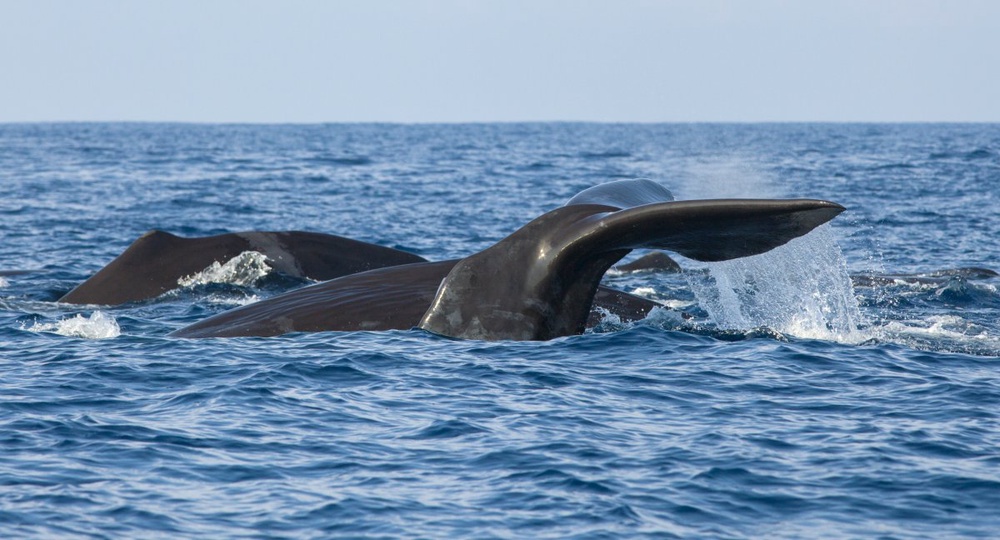
Dwarf minke whales have been tagged and tracked in Australia's Great Barrier Reef in a world-first pilot study which hopes to solve the mystery of where they spend the summer, AFP reports. Scientists at James Cook University in Queensland state are taking part in the effort, also involving researchers from Alaska, which tagged four of the whales last month and is now tracking their southerly progress down the east coast of Australia. "Although they occur all around the southern hemisphere, the Great Barrier Reef hosts the world's only known predictable aggregation of these exquisitely beautiful little whales," the university's Alastair Birtles said. Birtles, who has been studying the dwarf minke whale for 18 years, said while the animals were known to gather each winter off Lizard Island in northern Queensland, it was a mystery where they spent the summer months. Little is known about the dwarf minkes, which are usually between five to seven metres (16 to 23 feet) long. They went unnoticed at the Great Barrier Reef until the 1980s. Whales such as the humpback and southern right are known to migrate down Australia's east coast in the warmer months to spend the summer in the cooler waters off Antarctica, but whether the smaller dwarf minke whales join them is unknown. "We have no idea where they go," Birtles, co-leader of the James Cook University-based Minke Whale Project, told AFP, adding that a southern journey to Antarctica was one theory. The four whales had matchbox-sized tags placed on their dorsal fins by researchers working from a sonically and infra-sonically quiet ship used by the Australian Defence Department in mid-July. By August 12, the first whale to be tagged, a young male called Spot, had left the reef far behind and was speeding south along the edge of the continental shelf off Sydney, having swum almost 3,000 kilometres (1,860 miles) in less than 30 days. A female whale dubbed Deep Scars was not far behind, but the remaining two were still within the Great Barrier Reef Marine Park, which extends for some 2,300 kilometres, although they had travelled down the coast. The migrating whales were tracked carefully as they headed straight for a joint Australian-United States military exercise off the Queensland coast, which drew criticism from environmentalists when four bombs were dumped into the reef's marine park to avoid civilian boats which had strayed into the area. "Tracking them... is proving one of the most exciting experiences of my research career," Birtles said. "Their tracks have transformed our understanding of the movements of these animals which up to this point we had only documented by divers re-sighting them and taking underwater photographs of their unique colour patterns, which we use to identify individual animals."





Dwarf minke whales have been tagged and tracked in Australia's Great Barrier Reef in a world-first pilot study which hopes to solve the mystery of where they spend the summer, AFP reports.
Scientists at James Cook University in Queensland state are taking part in the effort, also involving researchers from Alaska, which tagged four of the whales last month and is now tracking their southerly progress down the east coast of Australia.
"Although they occur all around the southern hemisphere, the Great Barrier Reef hosts the world's only known predictable aggregation of these exquisitely beautiful little whales," the university's Alastair Birtles said.
Birtles, who has been studying the dwarf minke whale for 18 years, said while the animals were known to gather each winter off Lizard Island in northern Queensland, it was a mystery where they spent the summer months.
Little is known about the dwarf minkes, which are usually between five to seven metres (16 to 23 feet) long. They went unnoticed at the Great Barrier Reef until the 1980s.
Whales such as the humpback and southern right are known to migrate down Australia's east coast in the warmer months to spend the summer in the cooler waters off Antarctica, but whether the smaller dwarf minke whales join them is unknown.
"We have no idea where they go," Birtles, co-leader of the James Cook University-based Minke Whale Project, told AFP, adding that a southern journey to Antarctica was one theory.
The four whales had matchbox-sized tags placed on their dorsal fins by researchers working from a sonically and infra-sonically quiet ship used by the Australian Defence Department in mid-July.
By August 12, the first whale to be tagged, a young male called Spot, had left the reef far behind and was speeding south along the edge of the continental shelf off Sydney, having swum almost 3,000 kilometres (1,860 miles) in less than 30 days.
A female whale dubbed Deep Scars was not far behind, but the remaining two were still within the Great Barrier Reef Marine Park, which extends for some 2,300 kilometres, although they had travelled down the coast.
The migrating whales were tracked carefully as they headed straight for a joint Australian-United States military exercise off the Queensland coast, which drew criticism from environmentalists when four bombs were dumped into the reef's marine park to avoid civilian boats which had strayed into the area.
"Tracking them... is proving one of the most exciting experiences of my research career," Birtles said.
"Their tracks have transformed our understanding of the movements of these animals which up to this point we had only documented by divers re-sighting them and taking underwater photographs of their unique colour patterns, which we use to identify individual animals."

 +7 (777) 001 44 99
+7 (777) 001 44 99















































